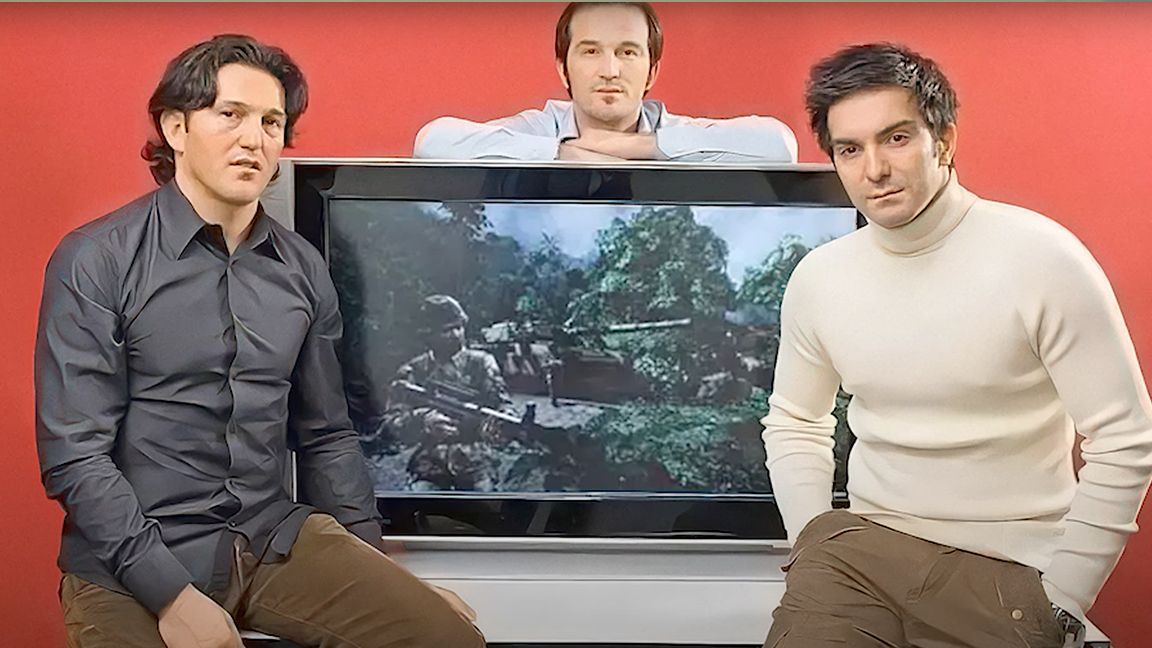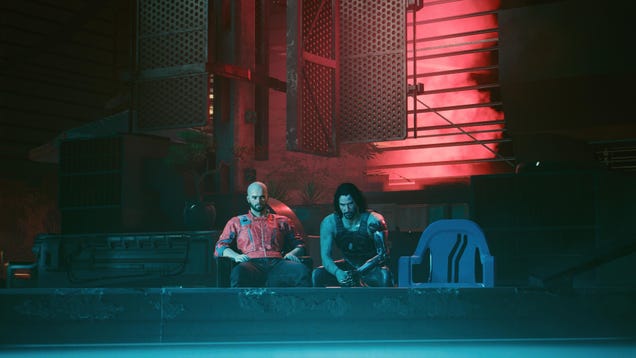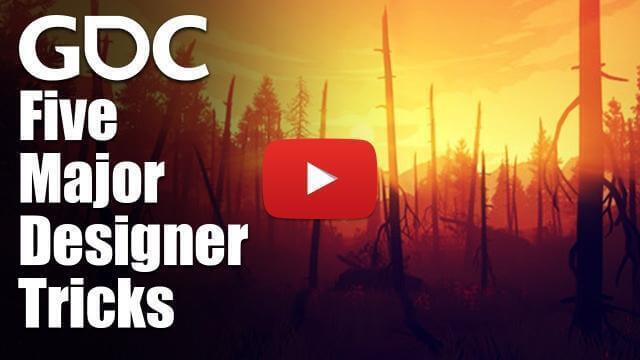Block’s CFO explains Gen Z’s surprising approach to money management
One stock recently impacted by a whirlwind of volatility is Block—the fintech powerhouse behind Square, Cash App, Tidal Music, and more. The company’s COO and CFO, Amrita Ahuja, shares how her team is using new AI tools to find opportunity amid disruption and reach customers left behind by traditional financial systems. Ahuja also shares lessons from the video game industry and discusses Gen Z’s surprising approach to money management.
This is an abridged transcript of an interview from Rapid Response, hosted by Robert Safian, former editor-in-chief of Fast Company. From the team behind the Masters of Scale podcast, Rapid Response features candid conversations with today’s top business leaders navigating real-time challenges. Subscribe to Rapid Response wherever you get your podcasts to ensure you never miss an episode.
As a leader, when you’re looking at all of this volatility—the tariffs, consumer sentiment’s been unclear, the stock market’s been all over the place. You guys had a huge one-day drop in early May, and it quickly bounced back. How do you make sense of all these external factors?
Yeah, our focus is on what we can control. And ultimately, the thing that we are laser-focused on for our business is product velocity. How quickly can we start small with something, launch something for our customers, and then test and iterate and learn so that ultimately, that something that we’ve launched scales into an important product?
I’ll give you an example. Cash App Borrow, which is a product where our customers can get access to a line of credit, often that bridges them from paycheck to paycheck. We know so many Americans are living paycheck to paycheck. That’s a product that we launched about three years ago and have now scaled to serve 9 million actives with billion in credit supply to our customers in a span of a couple short years.
The more we can be out testing and launching product at a pace, the more we know we are ultimately delivering value to our customers, and the right things will happen from a stock perspective.
Block is a financial services provider. You have Square, the point-of-sale system; the digital wallet Cash App, which you mentioned, which competes with Venmo and Robinhood; and a bunch of others. Then you’ve got the buy-now, pay-later leader Afterpay. You chair Square Financial Services, which is Block’s chartered bank. But you’ve said that in the fintech world, Block is only a little bit fin—that comparatively, it’s more tech. Can you explain what you mean by that?
What we think is unique about us is our ability as a technology company to completely change innovation in the space, such that we can help solve systemic issues across credit, payments, commerce, and banking. What that means ultimately is we use technologies like AI and machine learning and data science, and we use these technologies in a unique way, in a way that’s different from a traditional bank. We are able to underwrite those who are often frankly forgotten by the traditional financial ecosystems.
Our Square Loans product has almost triple the rate of women-owned businesses that we underwrite. Fifty-eight percent of our loans go to women-owned businesses versus 20% for the industry average. For that Cash App Borrow product I was talking about, 70% of those actives, the 9 million actives that we underwrote, fell below 580 as a FICO score. That’s considered a poor FICO score, and yet 97% of repayments are made on time. And this is because we have unique access to data and these technology and tools which can help us uniquely underwrite this often forgotten customer base.
Yeah. I mean, credit—sometimes it’s been blamed for financial excesses. But access to credit is also, as you say, an advantage that’s not available to everyone. Do you have a philosophy between those poles—between risk and opportunity? Or is what you’re saying is that the tech you have allows you to avoid that risk?
That’s right. Let’s start with how do the current systems work? It works using inferior data, frankly. It’s more limited data. It’s outdated. Sometimes it’s inaccurate. And it ignores things like someone’s cash flows, the stability of your income, your savings rate, how money moves through your accounts, or how you use alternative forms of credit—like buy now, pay later, which we have in our ecosystem through Afterpay.
We have a lot of these signals for our 57 million monthly actives on the Cash App side and for the 4 million small businesses on the Square side, and those, frankly, billions of transaction data points that we have on any given day paired with new technologies. And we intend to continue to be on the forefront of AI, machine learning, and data science to be able to empower more people into the economy. The combination of the superior data and the technologies is what we believe ultimately helps expand access.
You have a financial background, but not in the financial services industry. Before Block, you were a video game developer at Activision. Are financial businesses and video games similar? Are there things that are similar about them?
There are. There actually are some things that are similar, I will say. There are many things that are unique to each industry. Each industry is incredibly complex. You find that when big technology companies try to do gaming. They’ve taken over the world in many different ways, but they can’t always crack the nut on putting out a great game. Similarly, some of the largest technology companies have dabbled in fintech but haven’t been able to go as deep, so they’re both very nuanced and complex industries.
I would say another similarity is that design really matters. Industrial design, the design of products, the interface of products, is absolutely mission-critical to a great game, and it’s absolutely mission-critical to the simplicity and accessibility of our products, be it on Square or Cash App.
And then maybe the third thing that I would say is that when I was in gaming, at least the business models were rapidly changing from an intermediary distribution mechanism, like releasing a game once and then selling it through a retailer, to an always-on, direct-to-consumer connection. And similarly with banking, people don’t want to bank from 9 to 5, six days a week. They want 24/7 access to their money and the ability to, again, grow their financial livelihood, move their money around seamlessly. So, some similarities are there in that shift to an intermediary model or a slower model to an always-on, direct-to-consumer connection.
Part of your target audience or your target customer base at Block are Gen Z folks. Did you learn things at Activision about Gen Z that has been useful? Are there things that businesses misunderstand about younger generations still?
What we’ve learned is that Gen Z, millennial customers, aren’t going to do things the way their parents did. Some of our stats show that 63% of Gen Z customers have moved away from traditional credit cards, and over 80% are skeptical of them. Which means they’re not using a credit card to manage expenses; they’re using a debit card, but then layering on on a transaction-by-transaction basis. Or again, using tools like buy now, pay later, or Cash App Borrow, the means in which they’re managing their consistent cash flows. So that’s an example of how things are changing, and you’ve got to get up to speed with how the next generation of customers expects to manage their money.
#blocks #cfo #explains #gen #surprisingBlock’s CFO explains Gen Z’s surprising approach to money management
One stock recently impacted by a whirlwind of volatility is Block—the fintech powerhouse behind Square, Cash App, Tidal Music, and more. The company’s COO and CFO, Amrita Ahuja, shares how her team is using new AI tools to find opportunity amid disruption and reach customers left behind by traditional financial systems. Ahuja also shares lessons from the video game industry and discusses Gen Z’s surprising approach to money management.
This is an abridged transcript of an interview from Rapid Response, hosted by Robert Safian, former editor-in-chief of Fast Company. From the team behind the Masters of Scale podcast, Rapid Response features candid conversations with today’s top business leaders navigating real-time challenges. Subscribe to Rapid Response wherever you get your podcasts to ensure you never miss an episode.
As a leader, when you’re looking at all of this volatility—the tariffs, consumer sentiment’s been unclear, the stock market’s been all over the place. You guys had a huge one-day drop in early May, and it quickly bounced back. How do you make sense of all these external factors?
Yeah, our focus is on what we can control. And ultimately, the thing that we are laser-focused on for our business is product velocity. How quickly can we start small with something, launch something for our customers, and then test and iterate and learn so that ultimately, that something that we’ve launched scales into an important product?
I’ll give you an example. Cash App Borrow, which is a product where our customers can get access to a line of credit, often that bridges them from paycheck to paycheck. We know so many Americans are living paycheck to paycheck. That’s a product that we launched about three years ago and have now scaled to serve 9 million actives with billion in credit supply to our customers in a span of a couple short years.
The more we can be out testing and launching product at a pace, the more we know we are ultimately delivering value to our customers, and the right things will happen from a stock perspective.
Block is a financial services provider. You have Square, the point-of-sale system; the digital wallet Cash App, which you mentioned, which competes with Venmo and Robinhood; and a bunch of others. Then you’ve got the buy-now, pay-later leader Afterpay. You chair Square Financial Services, which is Block’s chartered bank. But you’ve said that in the fintech world, Block is only a little bit fin—that comparatively, it’s more tech. Can you explain what you mean by that?
What we think is unique about us is our ability as a technology company to completely change innovation in the space, such that we can help solve systemic issues across credit, payments, commerce, and banking. What that means ultimately is we use technologies like AI and machine learning and data science, and we use these technologies in a unique way, in a way that’s different from a traditional bank. We are able to underwrite those who are often frankly forgotten by the traditional financial ecosystems.
Our Square Loans product has almost triple the rate of women-owned businesses that we underwrite. Fifty-eight percent of our loans go to women-owned businesses versus 20% for the industry average. For that Cash App Borrow product I was talking about, 70% of those actives, the 9 million actives that we underwrote, fell below 580 as a FICO score. That’s considered a poor FICO score, and yet 97% of repayments are made on time. And this is because we have unique access to data and these technology and tools which can help us uniquely underwrite this often forgotten customer base.
Yeah. I mean, credit—sometimes it’s been blamed for financial excesses. But access to credit is also, as you say, an advantage that’s not available to everyone. Do you have a philosophy between those poles—between risk and opportunity? Or is what you’re saying is that the tech you have allows you to avoid that risk?
That’s right. Let’s start with how do the current systems work? It works using inferior data, frankly. It’s more limited data. It’s outdated. Sometimes it’s inaccurate. And it ignores things like someone’s cash flows, the stability of your income, your savings rate, how money moves through your accounts, or how you use alternative forms of credit—like buy now, pay later, which we have in our ecosystem through Afterpay.
We have a lot of these signals for our 57 million monthly actives on the Cash App side and for the 4 million small businesses on the Square side, and those, frankly, billions of transaction data points that we have on any given day paired with new technologies. And we intend to continue to be on the forefront of AI, machine learning, and data science to be able to empower more people into the economy. The combination of the superior data and the technologies is what we believe ultimately helps expand access.
You have a financial background, but not in the financial services industry. Before Block, you were a video game developer at Activision. Are financial businesses and video games similar? Are there things that are similar about them?
There are. There actually are some things that are similar, I will say. There are many things that are unique to each industry. Each industry is incredibly complex. You find that when big technology companies try to do gaming. They’ve taken over the world in many different ways, but they can’t always crack the nut on putting out a great game. Similarly, some of the largest technology companies have dabbled in fintech but haven’t been able to go as deep, so they’re both very nuanced and complex industries.
I would say another similarity is that design really matters. Industrial design, the design of products, the interface of products, is absolutely mission-critical to a great game, and it’s absolutely mission-critical to the simplicity and accessibility of our products, be it on Square or Cash App.
And then maybe the third thing that I would say is that when I was in gaming, at least the business models were rapidly changing from an intermediary distribution mechanism, like releasing a game once and then selling it through a retailer, to an always-on, direct-to-consumer connection. And similarly with banking, people don’t want to bank from 9 to 5, six days a week. They want 24/7 access to their money and the ability to, again, grow their financial livelihood, move their money around seamlessly. So, some similarities are there in that shift to an intermediary model or a slower model to an always-on, direct-to-consumer connection.
Part of your target audience or your target customer base at Block are Gen Z folks. Did you learn things at Activision about Gen Z that has been useful? Are there things that businesses misunderstand about younger generations still?
What we’ve learned is that Gen Z, millennial customers, aren’t going to do things the way their parents did. Some of our stats show that 63% of Gen Z customers have moved away from traditional credit cards, and over 80% are skeptical of them. Which means they’re not using a credit card to manage expenses; they’re using a debit card, but then layering on on a transaction-by-transaction basis. Or again, using tools like buy now, pay later, or Cash App Borrow, the means in which they’re managing their consistent cash flows. So that’s an example of how things are changing, and you’ve got to get up to speed with how the next generation of customers expects to manage their money.
#blocks #cfo #explains #gen #surprising














